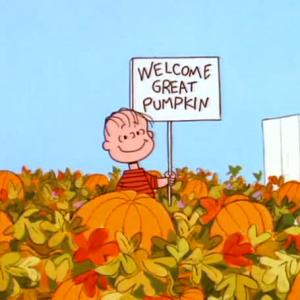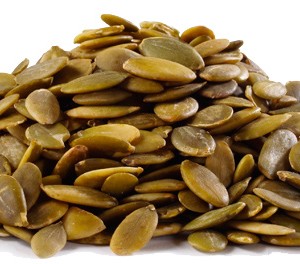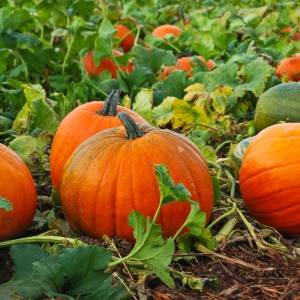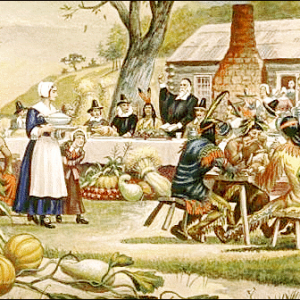
As you guys have seen, this month I’ve gone a little insane with pumpkin. baking like crazy and experimenting with new (somewhat healthful) recipes. But why is pumpkin so popular in the fall? What are the health benefits? Annnnddd….. the BIG question… is pumpkin a fruit or a vegetable? Brooke Pearson has kindly offered to help us out, giving information on this member of the Gourd Family. Take a look!
Pumpkins – a nutrition powerhouse!
Ever wonder why pumpkin is such a popular fall food? Part of the answer might lie in it’s versatility (See 31 Days of Pumpkin!). Not only is pumpkin a nutrition powerhouse, but it leaves little to go to waste. A quick nutrition breakdown of pumpkin shows that it is packed full of vitamins, minerals and fiber. It is especially rich in beta-carotene, one of a group of red, yellow and orange pigments, called carotenoids, that is converted to Vitamin A in the body. It is also a great source of potassium and has a whopping 564mg/cup — more than your average banana!
What’s more, beta-carotene is a potent antioxidant that helps prevent cell damage. According to the NIH, beta-carotene is used to decrease asthma symptoms caused by exercise, prevent certain cancers, heart disease, cataracts, night blindness and age related macular degeneration, as well as a host of other diseases and conditions. In supplement form, beta-carotene has also, however, been shown to increase the risk of cancer in certain populations, so it’s best to opt for whole-food sources like pumpkin, carrots and sweet potatoes and avoid any risk.
Pumpkin (per cup, boiled & drained, unsalted) at-a glance:
| Calories: 49 | Zinc: 1mg |
| Protein: 2g | Selenium: 0.50g |
| Carbohydrate: 12g | Vitamin C: 12mg |
| Fiber: 3g | Niacin: 1mg |
| Calcium: 37mg | Folate: 21mcg |
| Iron: 1.4mg | Vitamin A: 2650 IU |
| Magnesium: 22g | Vitamin E: 3mg |
| Potassium: 564mg |
Source: http://urbanext.illinois.edu/pumpkins/
All of this makes pumpkin look like a really amazing fruit (yes, it is botanically a fruit — not a vegetable!), but, who really eats a cup of plain, boiled pumpkin? Believe it or not, the first Native American’s did when they sliced wedges of pumpkin and cooked them over the fire. It was not until the colonists brought sugar to America that the first form of pumpkin pie emerged. To make the “pie,” the colonists cut the tops off of a pumpkin and removed the seeds, then filled the pumpkin with milk, honey and spices before baking it in over hot ashes.
Also not to be forgotten, are the pumpkin seeds which Native Americans roasted for a nutrient- and energy-dense snack. Pumpkin seeds (also known as ‘pepitas’), like other seeds and nuts, contain protein, heart-healthy, unsaturated fatty acids and are rich in micronutrients like magnesium, iron and zinc. Eating them whole (without the outer shell removed) provides even more fiber. So, while carving your jack-o-lantern this week, try roasting some of your own:

- Cut off the top of your pumpkin and preheat the oven to 375°F.
- Scoop seeds into a separate bowl, removing as much of the fibrous strands of pumpkin as possible.
- Rinse the seeds and pat them dry with a clean dish towel or paper towel.
- Lightly spray or toss seeds with some olive oil (to prevent burning), then sprinkle with salt, pepper and other spices to taste (Try cumin, cinnamon, red pepper, paprika, curry, rosemary or any other spices you like).
- Place in the oven and roast for approximately 15-20 minutes, or until golden brown.
- Let cool and enjoy!
Try eating roasted pumpkins seeds alone, sprinkled on a salad or in a snack mix like the one below.
Pumpkin Seed Snack Mix
(Serving Size = 1/4 cup)
11/2 cups roasted pumpkin seeds
1/2 cup unsweetened coconut flakes
1/2 cup dried, chopped fruit (like cranberries, dates or raisins)
1/2 cup unsalted almonds (or walnuts, pecans or hazelnuts)
1/2 cup dark chocolate chips (can substitute milk, semi-sweet or white chocolate)
I hope you enjoyed 31 Days of Pumpkin as much as I did. Luckily, there is still plenty of time before Thanksgiving to try out some new pumpkin recipes!
For more information about pumpkin and beta-carotene, see these sources:
http://urbanext.illinois.edu/pumpkins/
http://www.nlm.nih.gov/medlineplus/druginfo/natural/999.html


